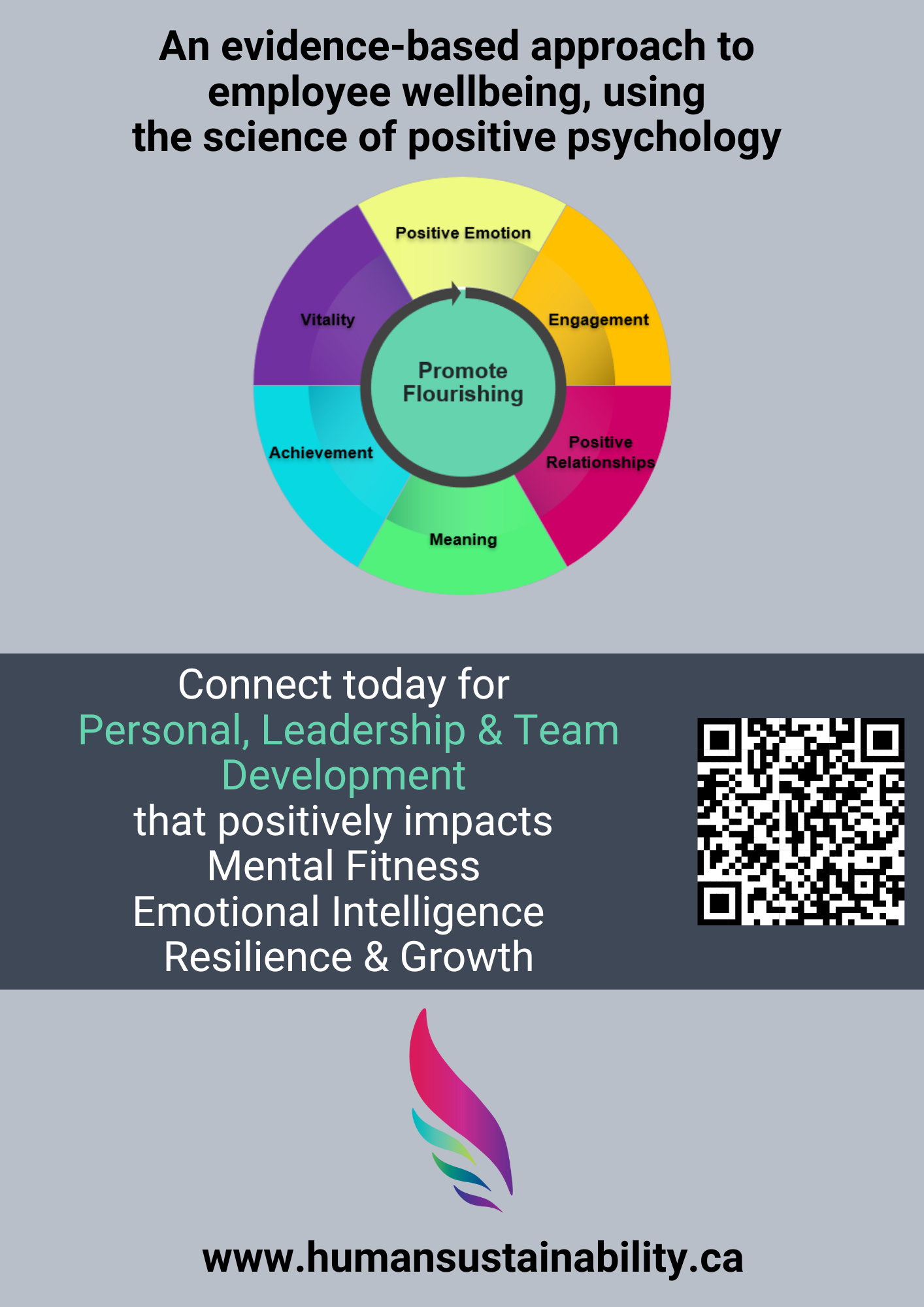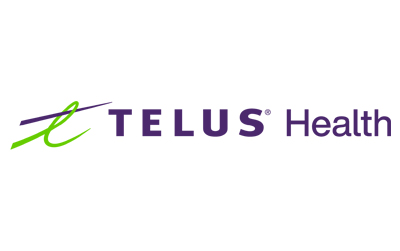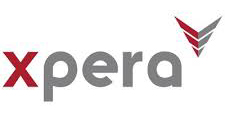
Issue #2 – APRIL 2023
HR Navigator is published the last Friday of each month
 Those of you who attended our highly successful Spring Workshop in Niagara Falls know that we literally painted the town purple! I don’t think I will ever forget the thrill of seeing the Falls lit purple in honour of our 60th anniversary!
Those of you who attended our highly successful Spring Workshop in Niagara Falls know that we literally painted the town purple! I don’t think I will ever forget the thrill of seeing the Falls lit purple in honour of our 60th anniversary!
Having our association celebrated by one of the Seven Wonders of the World isn’t the only thing that made our Spring Workshop so memorable. Our fabulous line-up of speakers, engaging topics, generous sponsors, conference dinner, and your participation combined to make this Spring’s Workshop one to remember!
It was a pleasure to have the opportunity to gather again after the isolation many of us experienced during COVID. I appreciated talking with colleagues about the opportunities and challenges many of us are currently facing, including the subject of Alternative Work Arrangements (a topic explored in greater detail in the articles contained in this month’s newsletter).
While I won’t attempt to recap all that we learned and shared in Niagara Falls, I do wish to highlight two important updates.
The first relates to enhancements we have made to the Terry Hallman scholarship as part of our diamond jubilee celebrations.
This year we will award two scholarships of $3,000 each to students enrolled in a full-time Ontario University or College degree program with an emphasis on Human Resources Management or Industrial Relations. We have also broadened the eligibility criteria. Applicants are no longer required to be a familial relation of an OMHRA member. Instead, applicants must now be recommended by a current member of OMHRA who has been in good standing with our Association for a minimum of one year. More information regarding the scholarship can be found here. This is a fabulous opportunity for you to help someone pursue a career in our chosen profession, and I encourage you to help us identify the emerging leaders in municipal Human Resource management.
The second update we shared at the Workshop relates to changes to our LRIS. You may now search and compare salaries for police, fire, paramedic and long-term care agreements that reach as far back as 2019. Your searches are also downloadable.
Finally, in last month’s newsletter I announced the launch of our Virtual Book Club, facilitated by Mohawk College Enterprise (MCE) and Humber College. Our book club meets online and is open to OMHRA members who love to read and would like the opportunity to discuss Human Resources themes and common interests.
I hope you will join us for what I am sure will be robust discussions about important HR topics:
- Welcome to the Hall by James Ridge (May 9th)
- The Coaching Habit by Michael Bungay Stanier (June 15)
- A Sense of Urgency by John P. Kotter (July 11)
- The Secrets of Highly Successful Groups by Daniel Coyle (October 17)
Participation is free and you may register at https://omhra.ca/events/
Here’s hoping the learnings you gathered at our Spring Workshop, and on our website and LRIS may be put into practice in the months to come!

Lori Bolton, President
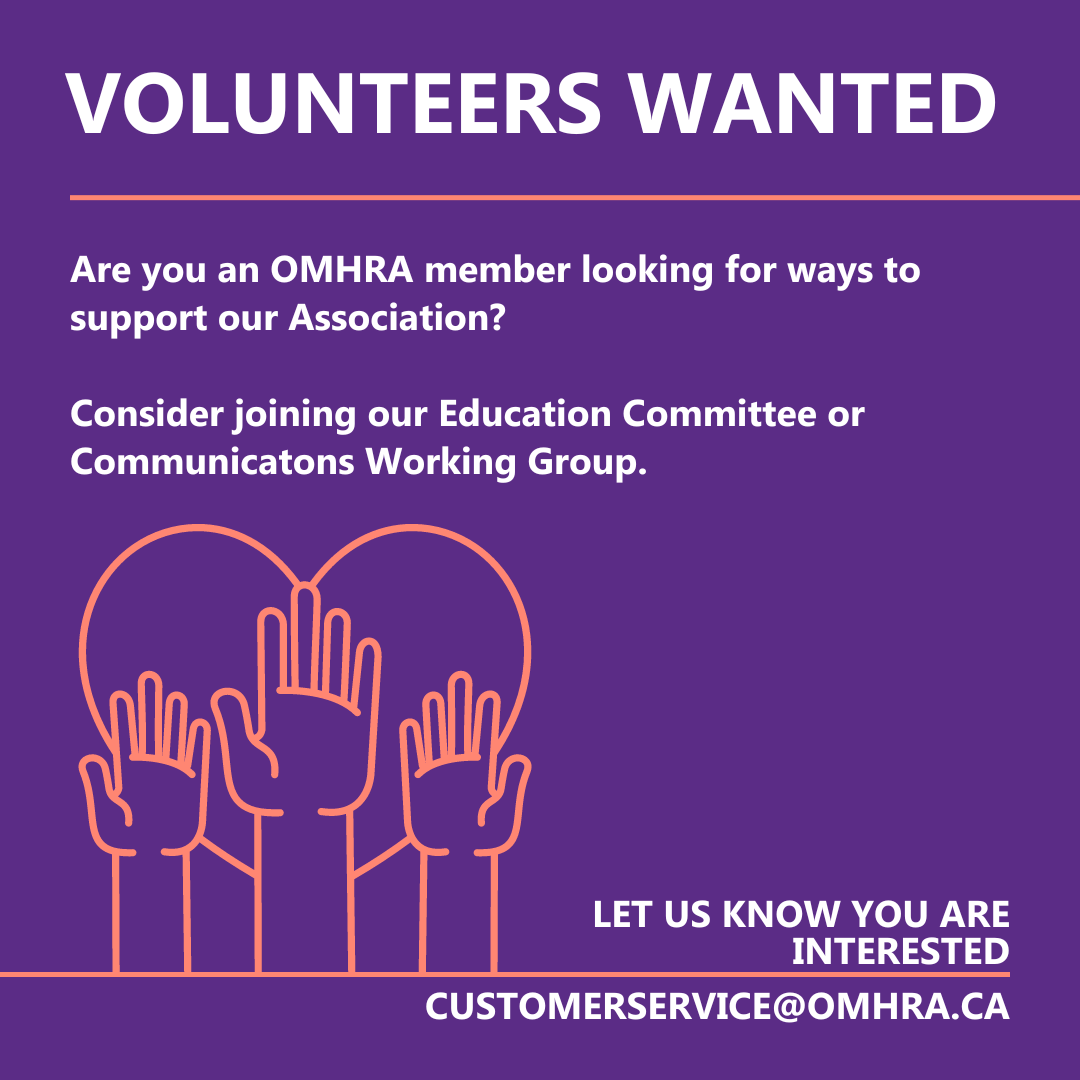

Alternative Work Arrangements: Promote Employee Engagement
In Unprecedented: Canada’s Top CEOs on Leadership During Covid-19, there are differences of thought regarding online versus onsite workplaces. Good comparative examples are Linamar where the CEO believes that “…we are better when we are physically together as a team…” and Lulemon Athletica where the CEO found “…learnings from the pandemic [provided] insights into hybrid work and the flexibility it provides for people…[allowing] people to bring their whole self to work…”
For many decades, alternative work arrangements have existed – full time, part time, seasonal, contract, flexitime, telecommuting, shiftwork – and several variations of each. The pandemic created new challenges and opportunities for both employers and employees when it comes to meeting individual working styles and preferences and to increasing employee engagement.
Employee Perspective
In pre-pandemic times, many employees were living “…in a connected world and working virtually…they developed interchangeable work styles…” With globalization came situations where employee teams could be dispersed over several countries and exposed to asynchronous ways of work. Now, post-pandemic, more and more employees are seeking to control this aspect of their lives.
The January 2023 Gallup study on employee engagement found working remotely and happiness at work to be positively linked. A significant contributing factor is the amount of time spent commuting. Employers who force people back into the ‘bricks and mortar’ places of work when remote or hybrid models of work better fit employees’ working styles and preferences may find more ‘quiet quitting’ taking place – disengagement with them and their organization.
Employer Perspective
The pre-pandemic ‘participation age’ of podcasts, YouTube videos, blogs, chatbots, etc. challenged employers in new ways with information overload, accuracy and quality of the information being shared, the vehicles being used to communicate (Facebook, Twitter, etc.) and best ways to ensure employees were connecting with the right content and expertise. Business interactions moved into the social media world to connect with customers and improve employee productivity in sectors and industries where technological communication was lacking. This new style of work meant work hours were no longer standardized. People began working whenever it best suited their personal circumstances.
For employers, this meant difficulty monitoring the work. How could they be sure employees were working their full complement of hours if they could not actually see them? For them, face to face not only meant they knew where everybody was and what they were doing, it also provided opportunities for frequent conversations and team member interaction. Ways to effectively meet daily challenges occurred through spontaneous interactions and discussions at the desk.
Advantages
There are several advantages for offering and equitably applying alternative work arrangements.
- Attracting and retaining the best.
New and current employees seek control over all aspects of their lives, personal and professional. Flexible work arrangements offer that control and raise engagement levels. - Encouraging diversity and inclusion.
Taking into consideration individual lifestyle requirements and commitments (e.g., family, religious) will mean supporting diverse needs. People engage with employers more readily when they feel included, when they have their individual needs met. - Promoting well-being.
Accommodating employees’ requests for flexible working arrangements can reduce incidents of burnout. Commuting to and from work, on busy roads, that includes several frustrating hours each workday, can negatively impact mental health. Having control over how, where, and when one works may reduce anxiety and create a comfortable workplace. - Increasing skill development.
Shifting working arrangements can provide employees with new technological skills and grow their interpersonal and communication abilities. As skills grow, so does organizational competency. Employers would do well to balance their need for face-to-face monitoring with additional skills gained through virtual work. - Enabling managerial balance.
Happy and engaged employees are directly related to performance. Happiness is a significant motivator. Providing fairness and equity through balanced policies and practices that govern alternative work arrangements can reduce the amount of time and effort managers expend monitoring and allow them the time to balance their own work life.
At Mohawk College Enterprise (MCE), we have implemented alternative work arrangements with team members that align with their workloads, their customer interactions, and their personal preferences. Even though we had to pivot quickly to providing our customers with virtual products and services, during the pandemic, we were already well-positioned to respond with flexibility and integrate different working styles and preferences into our culture.
-
Mayer, S. and Willis, A., Unprecedented: Canada’s Top CEOs on Leadership During Covid-19, pages 279 and 300.
- Finkelstein, J. and Gaven, M., Fuse: Making Sense of the New Cogenerational Workplace.
- https://www.gallup.com/394373/indicator-employee-engagement.aspx


Managing and Resolving Conflict in a Remote Workplace
Conflict in the workplace is not new, but as the nature of work evolves so too does the nature of workplace conflict. We might think that remote workers face fewer conflicts, however remote work introduces new sources of conflict and new avenues through which disagreements, incivility, harassment, and disrespectful behaviour can occur.
What causes conflict in remote/hybrid work environment?
In addition to traditional sources of conflict in the workplace – stress, workload, personality differences, poor communication, incivility, and disrespect – there are certain factors that are prevalent causes of conflict in remote or hybrid workplaces, including:
- Ineffective and/or insufficient communication and information sharing.
- Insecurity or feelings of vulnerability due to detachment from the workplace.
- Lack of clarity or uneven application of expectations.
- Lack of decorum or inhibition in virtual and digital interactions.
Remote workplaces have been referred to as ‘breeding grounds’ for misinformation. When communicating through digital mediums, information such as context and body language is lost, leading to the potential for misinterpretation and ‘attribution error.’ Is my supervisor angry with me? Why is no one this zoom call paying attention when I am speaking? Did my coworker intend to sound so rude in that text? Conflict and discontentment can be more difficult to detect in remote work. When employees are not onsite, there are fewer opportunities for casual interactions and check-ins. Remote workers may be less likely to voice their concerns if they must do so through digital venues or other formal processes rather than informal interactions. Some remote workers may choose to hide behind the digital divide and not speak up. Managers may be less likely to address conflict because they will not see it unless they are being proactive.
The ‘virtual’ workplace creates unique drivers of incivility and disrespect. Digital body language or ‘tone’ on video calls and in emails and texts can be inadvertently negative and often misinterpreted. A lack of decorum can arise in virtual meetings, particularly in the absence of agreed upon rules of decorum. And we are all too familiar with the fact that when communicating in the digital world, people often act without inhibition or filters, and the lines between what is and is not appropriate seem blurred.
How can we mitigate workplace conflict in remote or hybrid work?
Leaders play an important role in managing and mitigating conflict in any work environment. Many workplace conflicts can be avoided or mitigated if the supervisor or manager supports effective communication and engages in conflict management and early resolution. Doing so in a remote environment or within hybrid teams may require more diligence and different approaches:
- Engage with all employees on a regular basis and maintain the same level of accessibility to you for all team members. If you have an ‘open door’ make it sure it is open for all employees – in person and virtually.
- Communicate clearly, effectively, regularly, and equally to all team members.
- Set expectations and clearly communicate them to all employees. Monitor performance so that all team members know everyone will be accountable.
- Model and support effective communication skills, including awareness of differences in the communication and receipt of information between in-person and virtual settings.
- Establish ground rules for communication, accountability, meeting decorum, and engagement that equalize the playing field for all.
Resolving Workplace Conflict
Whether your employees work remotely, in-person, or in a hybrid model, it is important to address workplace conflict through proactive prevention and timely, effective resolution.
Be proactive – regular communications and team engagement can help to identify conflict in the early stages and support early and effective resolution.
Create safe space – ensure all employees have a means of speaking up and voicing their concerns, whether in-person or virtually. Recognize that remote workers may feel less comfortable speaking up because they feel more vulnerable or disconnected.
Engage in the difficult conversations – do not ignore the ‘small stuff.’ Address and resolve conflict and incivility when and where it happens.
Provide and support a range of conflict resolution tools – to managers and employees, which are suitable for use in-person or remotely. Facilitation, mediation, and other forms of ADR can be highly effective both in-person and on virtual platforms.
Restoration – include restorative practices in your conflict resolution approach and ensure they reflect the needs of all impacted employees regardless of where they work.
Remote work is part of the ‘new normal,’ and effective management and resolution of conflict needs to evolve to keep pace with the changing face of the workplace.
OMHRA Member Spotlight
Lindsie Potthast
Health & Safety Coordinator, Port Colborne
OMHRA Member since 2022
 What are three adjectives your colleagues would use to describe you?
What are three adjectives your colleagues would use to describe you?
Positive, adaptable, dependable
If you had to state your three rules of engagement, what would they be?
-
Encourage growth of any kind
- Always follow through
- Be willing to learn (even when you’re the expert in the room)
Did you have an important early influencer in your life? Could you reflect on their role in shaping you and perhaps preparing you to be a resilient leader?
A dear friend who ran their own I.T business. In conversation, they were very good at catching casual negativity, and helped me realize that staying in a previous career I was not fully engaged in was from a lack of being able to make changes. After some life restructuring, back to school I went!
5 years later and now in the HR field, I try to apply the importance of not letting your day/week/month/or future spin out of control because one incident. Change can be scary but it happens all the time, especially in our work lives. If we’re not speaking kindly to ourselves, our colleagues, or fostering positive conversations to those experiencing change, the day can be very long.
What advice do you have for people just beginning their careers in human Resource Management?
-
Don’t be afraid to ask questions! Always ask (even if it feels silly) to make sure you’re getting a full comprehension, to make the most informed decisions. I often find the questions that should otherwise be obvious, happen to be the things others are wondering as well.
-
Build trusting relationships with your team. Being able to simply talk out, or bounce ideas off your teammates can snow ball into better, more enlightened things!
What may surprise your colleagues about you?
- For someone who is primarily at a desk, I don’t like being sedentary for too long.
- My retirement dream is to have an animal sanctuary, or a dog daycare.
Do you have a hobby or non-work-related activity that you think enhances your effectiveness at work?
- Skiing- getting out there in a new environment, moving quickly but fully ready to learn from any mistakes along the way.
- Stained glass- Very tedious, takes a lot of practice to make perfection.
What is your favourite quote?
An ounce of prevention is worth a pound of cure (for my Health, Safety & Wellness colleagues)
What is your favourite work of fiction?
Anything Lisa Jewell, Invisible girl, The family upstairs, and currently reading I found you
What book on human resource management should every practitioner read?
Appreciate by David Sturt

Management Considerations When Implementing Alternative Work Arrangements
As COVID-19 restrictions have lifted over the last year and employees return to in-person work, employers increasingly face requests from employees for alternative work arrangements. Flexibility in work arrangements is a significant issue with regards to recruitment and retention. For municipalities who are able to, supporting a flexible work culture through alternative work arrangements is one potential response to the changing workplace expectations of employees.
Alternative work arrangements may include, but are not limited to:
- Compressed work weeks;
- Flexible hours with differing start and end times; or
- Telecommuting/remote work.
There are a number of considerations that municipalities need to be aware of when introducing alternative work arrangements.
Terms of Employment
The usual terms and conditions governing an employment relationship remain applicable to alternative work arrangements. These include the standards set out in Ontario’s Employment Standards Act, 2000 (“ESA”) such as those related to meal/break times, hours of work, and overtime, as well as human rights legislation and obligations. Where applicable, the provisions of any collective bargaining agreement also continue to apply.
Additionally, Municipalities should address the application of and compliance with their policies and procedures when committing to an alternative work arrangement and any modifications that may be necessary.
The Right to Disconnect
An employee’s scheduled hours of work should be specified and the hours of work recorded when agreeing to an alternative work arrangement. Whether employees are working the agreed upon arrangement in office or remotely, the ESA requires all employers with 25 or more employees to have a written policy on disconnecting from work. The ESA defines “disconnecting from work” to mean “not engaging in work-related communications, including emails, telephone calls, video calls or the sending or reviewing of other messages, so as to be free from the performance of work.” While this obligation does not require municipalities to create a new right for employees to disconnect from work, such policies could afford employees a greater right or benefit than under the ESA’s current rules, such as hours of work and eating periods, vacation with pay, and public holidays. To avoid this, municipalities should carefully draft these policies with their specific workforce and operations in mind.
Privacy Considerations and Monitoring Employees
While working remotely, employees must maintain and protect the confidentiality of all municipality-related information or documentation, whether in electronic or physical form, that is in their possession or control. This must be done at a standard of care consistent with the regular worksite. Information must be accessed and stored solely on the municipality’s systems, and the extent of acceptable use (if any) of the employee’s personal computer, cell phone or other equipment for municipal business should be addressed.
Similar to policies regarding the right to disconnect, whether employees are working the agreed upon alternative arrangement in office or remotely, the ESA requires all employers with 25 or more employees to have a written policy with respect to electronic monitoring of employees. The policy must state whether or not the municipality electronically monitors employees. If the municipality does, the policy must include, among other requirements, a description of how and in what circumstances the municipality may electronically monitor employees and the purposes for which the information obtained through electronic monitoring may be used by the municipality.
Constructive Dismissal
It is important that municipalities retain their management rights with respect to the physical location in which work is carried out. Where alternative work arrangements are implemented without an express agreement, depending on the nature of the position and the length of time the arrangement has been in place, there is a risk that it may become a term or condition of employment. When implementing alternative work arrangements, municipalities should explicitly establish the duration of the arrangement and determine the notice requirement if the arrangement is terminated by either party.
A recent development for Ontario municipalities which may impact the decision to implement alternative work arrangements is the Ontario government’s March 13, 2023 announcement of proposed updates to employment laws related to remote workers. If passed, the proposed changes would broaden the definition of “establishment” in the ESA to include employees’ remote home offices. As a result, employees who work solely from home would be eligible for the enhanced notice provided in situations of mass termination.
Municipalities should consult with their internal legal team or external legal counsel when considering the implications of introducing alternative work arrangements for their employees.
Jordynne Hislop specializes in labour and employment issues facing municipalities. If you have questions about alternative work arrangements or any other labour and employment matter, please contact Jordynne at 416-864-7021.
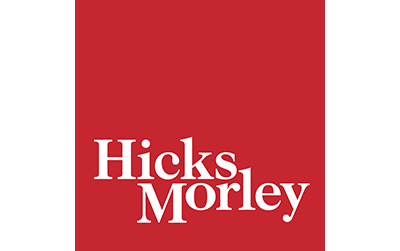

How to boost workplace productivity through a people-first approach
A lot of tools, software, and processes boast that they can increase productivity. But that overlooks a key factor: people. That’s because true productivity is only possible when the workforce is set up to succeed.
Employers, then, might benefit from thinking less about the granular metrics of efficiency, and more about ensuring their employees are passionate about their work and inspired to perform.
Right now, workplace stress is considered a pervasive issue. One study conducted in 2021 found that when people were distracted by worry and anxiety, the losses in business productivity were cumulatively totalled around $1,500 per employee annually. Conversely, when employees are happy, their productivity has been shown to increase by 12%.
Organizations can address productivity challenges by improving engagement through supportive solutions that aim to enhance employee wellbeing.
The problem of presenteeism in the workplace.
Disengagement can take many forms in the workplace, but one of the most prevalent is called presenteeism. Unlike absenteeism, where employees don’t show up at all, presenteeism occurs when people come to work but are not in a space to be productive, mentally or physically.
Presenteeism can be common in organizations that don’t enable employees to take adequate time off to recover from illness, or don’t have a culture of shared trust and responsibility where employees feel that they can reliably defer or delegate work. Flexible work schedules, however, can curb presenteeism. A recent survey of 10,000 desk workers found that those with schedule flexibility reported nearly 40% higher productivity and almost 65% improved focus.
Employers know there’s a big difference between employees who are simply present physically, and those who are truly present and engaged — and the financial impact is significant. Each year in North America, these disengaged employees cost the business economy more than $350 billion.
Mental health support is a potential solution to disengagement, since stress and burnout are directly related to mental health disorders and decreased productivity. Engaged employees are productive employees.
Engaged employees view the workplace as a space where they feel valued, validated, and respected. On the other hand, disengagement involves a lack of interest, motivation, and energy, which leads to substandard focus and effort. And research on engagement has actually found that a two-thirds majority of employees aren’t fully engaged.
Productivity has been shown to be 14% higher among engaged teams. But a more engaged and productive workplace has to comprehensively support employees.
This improved engagement starts with leadership. For employers and managers, that means establishing a relationship with employees based on a shared sense of purpose, and ensuring that people are equipped with the resources and opportunities to hone their skills, use their unique talents, and do their best work.
At the peer-to-peer level, teams within the organization need to have relationships based on mutual confidence, integrity, success, and trust. Not only does this empower employees to lean on each other when overcoming stress or recovering from a personal illness or issue, but it’s also transformative for the organization’s quality of service and reputation.
Creating the conditions for exemplary performance.
Of course, organizations can’t just mandate that employees be more productive. Instead, they have to institute a people-first culture and implement systems, processes, and incentives to empower productivity.
One way is by enhancing employees’ sense of autonomy and control over their time. A 2021 survey by the American Psychiatric Association found that 34% of employees see flexible hours as effective for boosting their mental health. It’s been well-established that a sense of freedom and independence can increase motivation and performance. This is further supported by a 2022 poll where 61% of the workforce ranked work-life balance and better personal wellbeing as “very important”.
Another way is by providing access to mental health support:
- 37% of employees want mental health resources;
- 32% want explicit encouragement from their leaders and managers to take care of their health; and
- 30% want their organization to actively champion employees taking their full allotment of paid time off.
For employers, it’s critical to listen to the workforce and take their requests seriously.
Fostering autonomy and productivity through virtual care.
Digital healthcare services are a way to help meet employees’ health and wellbeing needs by entrusting employees with control over their time and helping them achieve the work-life balance they desire.
TELUS Health offers holistic solutions that provide tools, resources, and ancillary services to help boost an overall sense of balance and wellbeing. The employee assistance program (EAP) provides an opportunity for people to talk about their personal and professional challenges with counsellors.
It’s a simple solution to a seemingly complex problem — employees who are happy and fulfilled are also the ones who accomplish the most at work.
60 Years of Labour and
Employment Law in Ontario
Employment Standards Act, 1969, first came into force in Ontario.
In 1969, the ESA first came into force, consolidating various work-related statutes into one comprehensive Act.
Ontario Occupational Health and Safety Act (“OHSA”) came into force.
The Ontario legislature repealed various health and safety related laws and replaced them with the consolidated and more comprehensive OHSA. The OHSA was “designed to protect workers against health and safety hazards in the workplace.” The OHSA also established the Occupational Health and Safety Division of the Ministry of Labour as the centralized administrator of the OHSA.
Ontario (Human Rights Commission) v. Simpsons-Sears Ltd., (the “O’Malley decision”)
The Supreme Court of Canada released the O’Malley decision in 1985, solidifying the existence of the duty to accommodate under Canadian common law.
Pay Equity Act, 1987 (“PEA”)
The PEA was proclaimed in force on January 1, 1988, and was the first legislation in Ontario enacted to address systemic gender discrimination in workplace compensation.
Central Alberta Dairy Pool v Alberta (HRC) (1990)7 (Dairy Pool)
Built upon the O’Malley Decision (1985) and established a full application of what the duty to accommodate entails. Established that employers have a duty to accommodate to the point of undue hardship.
Dairy Pool firmly entrenched human rights law and accommodation into labour law and collective agreements.
Pension and Benefits Act, 1992-3
The PBA received Royal Assent on April 26, 1993, making it “the first comprehensive provincial pension benefits statute in Canada.”
Machtinger v. HOJ Industries Ltd.
Established the common law principle that employers cannot contract out of the ESA. If a provision is below the ESA standard, it is void and the claimant can sue for common law damages.
Ontario Labour Relations Act, 1995
In 1995, the Labour Relations Act, 1995 repealed and replaced the former Labour Relations Act. This new legislation included many significant changes and reversed many previous amendments to the act, including, among others:
- The termination of bargaining rights and collective agreements covering certain professionals to whom the LRA no longer applied;
- Significant changes to the certification process, such as eliminating the card-based certification system and replacing it with the vote-based scheme;
- Requiring a collective agreement to be ratified by a vote of the employees in the bargaining unit (unless the agreement is an arbitrated contract, the result of a last offer vote, or involves construction industry employees) in order to take effect; and
- Making strikes unlawful unless supported by majority vote (except in the construction industry)
Supreme Court of Canada released the Meiorin decision
Established a 3-step test for determining whether a prima facie discriminatory standard is a bona fide occupational requirement.
Employment Standards Act, 2000 is enacted
Repealed and replaced the 1969 Act, introducing major changes, including anti-reprisal protections, parental and personal emergency leaves.
Also allowed for maximum number of hours of work per week to be increased by agreement, overtime averaging, and flexibility for breaks and vacation periods.
Human Rights Tribunal of Ontario established
The HRTO was established as a direct access tribunal to adjudicate discrimination claims under 2006 amendments to the Human Rights Code. Its rules, forms and processes were designed to support self-drafted applications and responses from unrepresented parties. The statute provides that no claim within HRTO jurisdiction can be dismissed without an oral hearing. Effective June 30, 2008 all new complaints of discrimination were filed with the HRTO.
Occupational Health and Safety Amendment Act (Violence and Harassment in the Workplace) (“Bill 168”)
The Occupational Health and Safety Amendment Act (Violence and Harassment in the Workplace) (“Bill 168”) provided the addition of increased and specified obligations regarding violence and harassment in the workplace under the OHSA.
Saskatchewan Federation of Labour v. Saskatchewan
The Supreme Court of Canada held that the right to strike is protected under the Charter right to freedom of association.
Waksdale v. Swegon
The Ontario Court of Appeal held that termination clauses in employment contracts must be read together and if one contravenes the Employment Standards Act, 2000 (ESA), all are unenforceable.
Canadian Union of Postal Workers v. Foodora Inc.
Provided what is now the leading test for determining employee versus independent contractor.
Research provided by:


Suspect a remote worker of time theft? What to do next
Time theft is when an employee is being paid to work, but they’re not.
A few examples of time theft are:
- persistently starting work late or ending work early
- longer-than-scheduled breaks
- excessive time on social media during work time
- conducting personal errands during work time
- running a side business during work time
- having a colleague clock in or out for them
Every year, time theft costs Canadian businesses millions of dollars in productivity losses.
It’s not any one type of business that experiences time theft. No organization or industry is immune to time theft.
Time theft is just as common within corporations and government organizations as it is within restaurants, hospitality, and manufacturers.
The pandemic has increased the possibility of time theft
Time theft is not a new challenge for business operators, but one could argue that the likelihood of time theft occurring has only increased over the last couple of years. Due to the COVID-19 pandemic, the number of employees who work remotely (both full-time and part-time) has increased dramatically, with autonomy granted as a result.
For some employers, the assumption of greater time theft occurring is based on simple logic: when an employee is working in the company’s office, they’re being supervised. When an employee works from their home, they’re not being supervised. Less supervision can lead to more time theft.
Initial steps you can take to try and confirm time theft
Suspecting an employee of time theft isn’t enough of a reason to confront them. You need proof before you can act. A couple steps you can take to gain confirmation are:
- Performance assessments: use clear performance measurements to determine if the employee is meeting performance expectations.
- Case management and care path check-ins: if the employee is on a modified work plan, compare the work commitment they are exhibiting to what is outlined in the plan they had previously agreed to.
If, after conducting either one of these assessments, the findings are inconclusive, but you still suspect the employee of committing time theft, there are a few options for taking your investigation to the next level.
How to obtain more conclusive evidence of time theft
There are three ways to gather more conclusive evidence that an employee is committing time theft:
- Add key logging or monitoring software to their computer: this type of tracking technology can be used to measure keystrokes or mouse activity, which will allow you to confirm whether the employing has logged onto their computer and is doing work.
- Conduct an Open-Source Intelligence (OSINT) investigation with an objective third party: this is the collection and analysis of data gathered from open sources (e.g. the Internet and social media sites).
Conducting an OSINT investigation allows the employer to establish the employee’s online footprint so they can get a greater sense of how they are spending their time during the workday. An online footprint may include day-to-day activities, level of functionality, connections with various individuals, or other employment-related activities.
Armed with this information, the employer is better equipped to conclude whether the employee is using their work time for working or for personal matters.
- Hire a third-party organization to conduct surveillance: when an employee suspected of time theft is under surveillance, they are followed in a discreet, unobtrusive manner, their activities are documented, and evidence is collected. The surveillance is done respecting all privacy and trespass laws and regulations.
It’s worth mentioning that the third-party organization will produce an unbiased report that summarizes what was observed. It is then up to the employer to review the observations in the report and come to their own conclusion on whether the employee is guilty of time theft.
In addition, while surveillance is often utilized when there are suspicions of time theft at work, or of embellished and exaggerated claims, it can also be used to confirm the legitimacy of time use at work or benefit claims.
Follow a measured approach to time theft investigating
Just as in a personal relationship, trust between an employer and employee is imperative if a work relationship is going to be successful. Don’t risk breaking that trust by accusing an employee of time theft before you have sufficient evidence to back up your claim.
Always do your due diligence first.
Follow a methodical, strategic process that starts with a performance management or case management review. If these measures prove inconclusive, escalate your exploration by implementing logging software, an open-source intelligence investigation, or surveillance. Whichever investigative initiative you deploy, they are all proven methods for providing the objective intel you require to confirm whether your suspicions of time theft are true or unfounded.
It’s worth the time to prevent time theft.
Table of Contents
- 1
- 2
- 3
- 4
- 5
- 6
- 7
- 8


